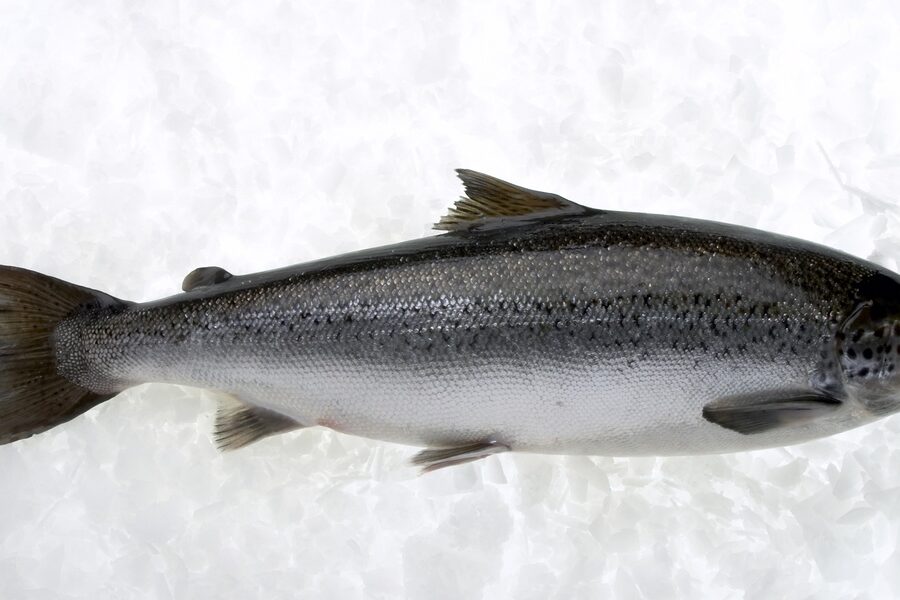Estonia’s shores, rivers and thousands of lakes host a surprising mix of freshwater and brackish species. Local anglers and nature lovers encounter different fish depending on whether they’re casting in the Gulf of Finland, a forest lake, or a slow-moving river.
There are Fish of Estonia 69, ranging from Asp to Zarte. For each species you’ll find below Scientific name,Habitat / distribution,Max length (cm) to help with identification and quick comparison — you’ll find the full list below.
Where in Estonia will I see the widest variety of fish?
Coastal areas of the Baltic and large connected lake-river systems (like Võrtsjärv and the Narva/Peipus basins) host the greatest mix of marine and freshwater species; smaller forest lakes tend to have fewer, more typical freshwater types such as perch, pike and roach.
What’s the best way to use the table to identify a catch?
Match where you caught the fish to the Habitat / distribution column, check the reported Max length (cm) for size context, then confirm with the Scientific name or common names—using photos from field guides or apps alongside the table speeds up reliable ID.
Fish of Estonia
| Common name | Scientific name | Habitat / distribution | Max length (cm) |
|---|---|---|---|
| Perch | Perca fluviatilis | Widespread in nearly all freshwater bodies and brackish coastal waters across Estonia. | 60 |
| Northern Pike | Esox lucius | Ubiquitous in lakes, rivers, and brackish coastal bays throughout Estonia. | 150 |
| Roach | Rutilus rutilus | Extremely common in most lakes, rivers, and coastal waters across the country. | 50 |
| Bream | Abramis brama | Common in slow-moving rivers, large lakes (like Peipsi and Võrtsjärv), and coastal bays. | 90 |
| Zander | Sander lucioperca | Large lakes (Peipsi, Võrtsjärv), rivers (Emajõgi), and Pärnu Bay. | 130 |
| Baltic Herring | Clupea harengus membras | Baltic Sea, Gulf of Finland, Gulf of Riga; a key marine species. | 37 |
| European Sprat | Sprattus sprattus | Abundant in the Baltic Sea and its gulfs, often mixed with herring schools. | 17 |
| Atlantic Cod | Gadus morhua | Baltic Sea, primarily in deeper, more saline western waters. | 150 |
| European Flounder | Platichthys flesus | Common in shallow coastal waters of the Baltic Sea, often entering estuaries. | 60 |
| Atlantic Salmon | Salmo salar | Anadromous; spawns in northern and western Estonian rivers (e.g., Pärnu, Kunda), lives at sea. | 150 |
| Sea Trout | Salmo trutta | Anadromous; widespread along the coast and in many rivers across Estonia. | 130 |
| Brown Trout | Salmo trutta fario | Freshwater resident form, found in clean, cool rivers and streams, especially in northern and southern Estonia. | 100 |
| Rainbow Trout | Oncorhynchus mykiss | Introduced species; found in fish farms and stocked in some private lakes and rivers. | 120 |
| European Eel | Anguilla anguilla | Migratory; found in most freshwater bodies and coastal waters but is now critically endangered. | 130 |
| Burbot | Lota lota | Widespread in larger lakes (Peipsi, Võrtsjärv) and rivers. | 120 |
| Wels Catfish | Silurus glanis | Large, slow-moving rivers and lakes in southern Estonia (e.g., Lake Peipsi, Emajõgi River). | 300 |
| Tench | Tinca tinca | Common in weedy, slow-moving lakes and rivers with muddy bottoms. | 84 |
| Crucian Carp | Carassius carassius | Hardy fish found in small ponds, ditches, and lakes throughout Estonia. | 64 |
| Prussian Carp | Carassius gibelio | Invasive; extremely common in many lakes, rivers, and coastal inlets. | 45 |
| Common Carp | Cyprinus carpio | Introduced; found in warmer, nutrient-rich lakes and rivers. | 120 |
| Ruffe | Gymnocephalus cernua | Common in freshwater and brackish environments, especially large lakes. | 25 |
| Ide | Leuciscus idus | Common in larger rivers and lakes, also found in coastal waters. | 100 |
| Asp | Leuciscus aspius | Large rivers (Emajõgi, Pärnu) and associated lakes (Peipsi). | 120 |
| Chub | Squalius cephalus | Mainly found in rivers in southern and central Estonia. | 80 |
| Vimba Bream | Vimba vimba | Migratory; found in the Baltic Sea, entering rivers like the Pärnu and Narva to spawn. | 50 |
| White Bream | Blicca bjoerkna | Common in lakes, slow rivers, and brackish waters; often found with common bream. | 45 |
| Bleak | Alburnus alburnus | Abundant in schools in most lakes, rivers, and coastal areas. | 25 |
| Rudd | Scardinius erythrophthalmus | Common in weedy, clear, slow-moving or still waters. | 50 |
| Gudgeon | Gobio gobio | Common on the bottom of clear rivers and lakes with sandy or gravelly beds. | 20 |
| Spined Loach | Cobitis taenia | Found in sandy or silty bottoms of clean rivers and lakes; protected species. | 13 |
| Stone Loach | Barbatula barbatula | Common in the shallows of fast-flowing streams and rivers with stony bottoms. | 21 |
| Weatherfish | Misgurnus fossilis | Protected species; found in muddy, overgrown ditches, oxbow lakes, and marshes. | 35 |
| Three-spined Stickleback | Gasterosteus aculeatus | Abundant in both freshwater and marine environments, from ditches to the open sea. | 11 |
| Nine-spined Stickleback | Pungitius pungitius | Widespread in freshwater and brackish habitats, often in dense vegetation. | 9 |
| European Smelt | Osmerus eperlanus | Migratory; found in coastal waters and large lakes like Peipsi and Võrtsjärv. | 45 |
| Grayling | Thymallus thymallus | Found in clean, fast-flowing rivers in northern and southern Estonia. | 60 |
| Garfish | Belone belone | Seasonal migrant to Estonian coastal waters in spring and summer. | 90 |
| Turbot | Scophthalmus maximus | Marine flatfish found on sandy or gravelly bottoms in the western Baltic Sea. | 100 |
| European Bullhead | Cottus gobio | Found in small, clean, fast-flowing streams and rivers with stony bottoms. | 18 |
| Fourhorn Sculpin | Myoxocephalus quadricornis | Baltic Sea and some deep, cold freshwater lakes; a glacial relict. | 60 |
| Lumpsucker | Cyclopterus lumpus | Marine; found in the Baltic Sea, though more common in more saline waters. | 60 |
| River Lamprey | Lampetra fluviatilis | Anadromous; migrates from the sea into rivers (Narva, Pärnu) to spawn. | 50 |
| Sea Lamprey | Petromyzon marinus | Marine, migrates into larger rivers to spawn; rarer than the river lamprey. | 120 |
| Brook Lamprey | Lampetra planeri | Non-migratory; found in small, clean streams and rivers across Estonia. | 19 |
| Round Goby | Neogobius melanostomus | Invasive; established in the coastal waters of the Gulf of Finland and Pärnu Bay. | 25 |
| Viviparous Blenny | Zoarces viviparus | Common in shallow coastal waters of the Baltic Sea, especially in rocky or weedy areas. | 50 |
| Vendace | Coregonus albula | Found in deep, cool lakes, most notably Lake Peipsi and Lake Võrtsjärv. | 45 |
| Peipsi Whitefish | Coregonus lavaretus maraenoides | Endemic to Lake Peipsi; also found in other large lakes. | 75 |
| Zarte | Blicca bjoerkna | Common in lakes, slow rivers and brackish waters; often found with bream. | 45 |
| Sabrefish | Pelecus cultratus | Large lakes (Peipsi) and the Emajõgi river basin; also in brackish coastal waters. | 60 |
| Grass Carp | Ctenopharyngodon idella | Introduced species for vegetation control in some lakes and ponds. | 150 |
| Silver Carp | Hypophthalmichthys molitrix | Introduced species, rarely encountered. | 125 |
| Tuberose Goby | Proterorhinus semilunaris | Invasive; found in Pärnu River basin and coastal waters. | 9 |
| European Bitterling | Rhodeus amarus | Southern Estonia, in slow-moving or still waters; protected species. | 10 |
| Minnow | Phoxinus phoxinus | Common in clean streams, rivers, and lakeshores across Estonia. | 14 |
| Four-bearded Rockling | Enchelyopus cimbrius | Marine; found in deeper, more saline parts of the western Baltic. | 40 |
| Lumpsucker | Cyclopterus lumpus | Marine; found in the Baltic Sea, more common in western parts. | 60 |
| Sandeel | Ammodytes tobianus | Marine; found in sandy-bottomed coastal areas of the Baltic Sea. | 20 |
| Straight-nosed Pipefish | Nerophis ophidion | Marine; found in seagrass beds along the coast. | 30 |
| Deep-snouted Pipefish | Syngnathus typhle | Marine and brackish waters; common in eelgrass and seaweed beds. | 35 |
| Black Goby | Gobius niger | Marine and brackish waters, common along the coast in shallow areas. | 18 |
| Sand Goby | Pomatoschistus minutus | Very common on sandy bottoms in shallow marine and brackish waters. | 11 |
| Common Goby | Pomatoschistus microps | Found in very shallow coastal waters, lagoons and rock pools. | 9 |
| Atlantic Hook-head Sculpin | Artediellus uncinatus | Marine; a rare deep-water sculpin in the western Baltic. | 15 |
| Shorthorn Sculpin | Myoxocephalus scorpius | Marine; common along rocky coasts of the Baltic Sea. | 60 |
| Long-spined Bullhead | Taurulus bubalis | Marine; found along rocky shores, especially in the western Estonian archipelago. | 25 |
| Dace | Leuciscus leuciscus | Found in clean, flowing rivers, mainly in southern and central Estonia. | 40 |
| Belica | Leucaspius delineatus | Found in small ponds, ditches, and the vegetated margins of larger lakes. | 12 |
| Nase | Chondrostoma nasus | Native to the Narva River basin; a bottom-feeding river fish. | 50 |
Images and Descriptions

Perch
An abundant and popular sport fish, easily recognized by its striped body, spiny dorsal fin, and red-orange pelvic fins. A common catch for anglers, it is found everywhere from small ponds to the Baltic Sea coast.
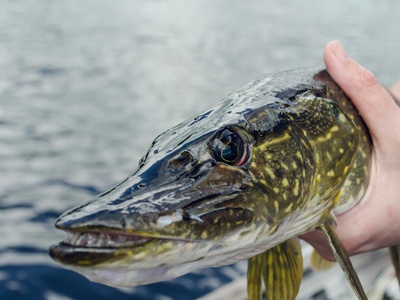
Northern Pike
A top ambush predator with a long, torpedo-shaped body and a duck-bill-like mouth full of sharp teeth. Prized by anglers for its aggressive strike and fighting ability. It lurks in weedy, quiet waters waiting for prey.

Roach
A silvery, deep-bodied fish with distinctive red eyes and reddish lower fins. It’s often the most numerous fish in many water bodies and is a primary food source for predators like pike and zander.
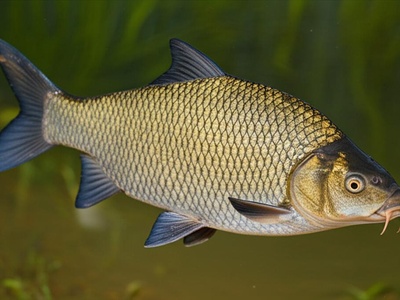
Bream
A deep, flat-bodied fish with a bronze or golden sheen and a distinctive down-turned mouth for bottom feeding. Famous for its slimy coating, it’s a popular target for coarse anglers, especially in summer.
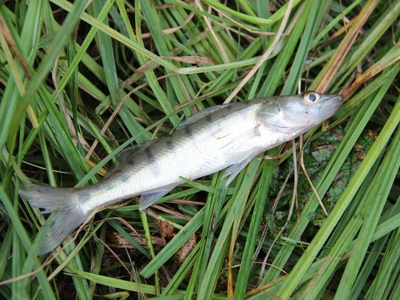
Zander
A prized game fish with a slender body, large glassy eyes adapted for low light, and a spiny dorsal fin. This predatory relative of the perch is known for its delicious white meat and is a challenging catch for anglers.

Baltic Herring
A smaller subspecies of Atlantic herring, this is Estonia’s most important commercial fish. It forms huge schools and is a vital part of the marine food web. Often pickled, smoked, or fried, it is a cornerstone of Estonian cuisine.
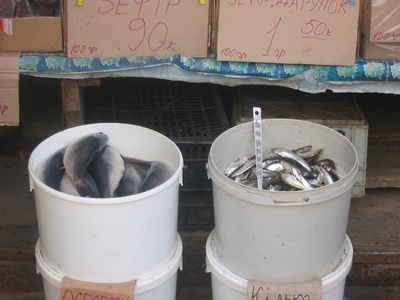
European Sprat
A small, silvery fish closely related to herring, often caught and processed together. It’s the fish used for the famous canned “sprats” (kilu). A crucial food source for larger fish like cod and salmon.
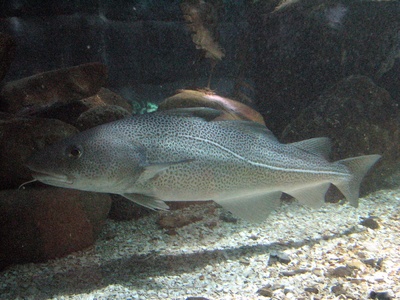
Atlantic Cod
A classic marine fish with a barbel on its chin and a mottled brownish pattern. Baltic cod stocks have faced significant challenges, making them a less common catch than in the past. Found in deeper, saltier parts of the sea.

European Flounder
A flatfish that lies on its side on the seabed. It is well-camouflaged and an opportunistic predator. A common catch for coastal anglers, particularly in sandy or muddy areas. It can tolerate very low salinity.

Atlantic Salmon
The “king of fish,” known for its epic migrations from the sea to its native rivers to spawn. A highly valued sport and commercial fish, its populations are supported by conservation efforts and stocking programs.

Sea Trout
The migratory sea-run form of brown trout. It has a silvery body with black spots. A very popular and powerful sport fish that anglers target both in rivers during spawning runs and along the sea coast.

Brown Trout
The non-migratory form of Salmo trutta, known for its beautiful, varied spotting patterns. It thrives in well-oxygenated rivers and is a cherished target for fly fishers. Its presence indicates good water quality.
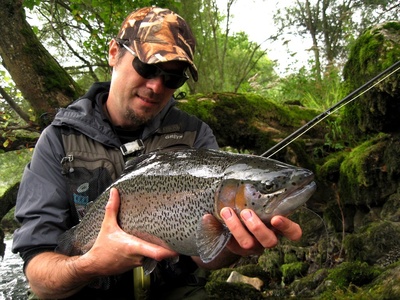
Rainbow Trout
Native to North America, this species is farmed extensively in Estonia for food. Escapees establish small, localized populations in some rivers. Recognized by the broad pinkish stripe along its side.
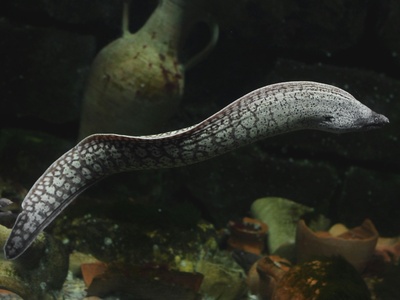
European Eel
A snake-like fish with a fascinating life cycle, migrating to the Sargasso Sea to breed. Once common, its population has plummeted. A protected species, all caught eels should be handled with care and released.
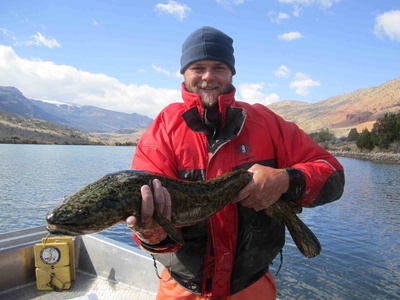
Burbot
The only freshwater member of the cod family, with a single barbel on its chin. It’s a bottom-dweller that becomes most active in winter, making it a unique target for ice anglers. Valued for its liver.

Wels Catfish
Estonia’s largest freshwater fish, a legendary bottom-dweller with a broad head and long “whiskers.” A rare and protected species, it prefers warm, slow waters. Catching one is a rare event, and they must be released.
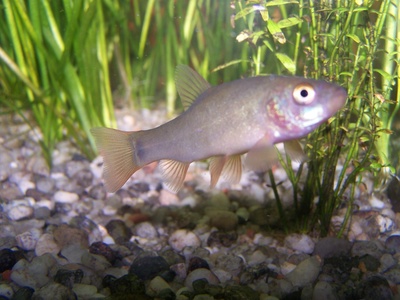
Tench
A stocky, olive-green fish with a thick coat of slime, red eyes, and a small barbel at its mouth corner. Known for its hardiness, it thrives in weedy, low-oxygen waters where other fish might struggle.

Crucian Carp
A deep-bodied, golden-bronze carp without barbels. It is incredibly resilient, able to survive in low-oxygen conditions and even brief periods of freezing. Often found in isolated, small water bodies.

Prussian Carp
An invasive and highly successful species, similar to crucian carp but more silvery. It can reproduce asexually (gynogenesis), which has allowed it to spread rapidly and often outcompete native species.
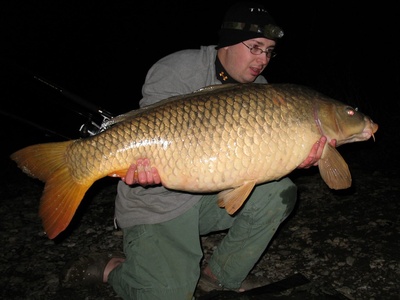
Common Carp
A large, powerful cyprinid with two pairs of barbels on its mouth. Introduced for angling and aquaculture, it’s a popular target for specialist anglers. Prefers warm, weedy, slow-moving waters.
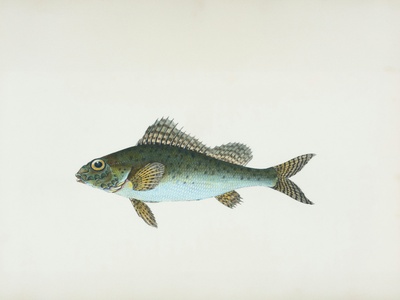
Ruffe
A small, perch-like fish with a spiny dorsal fin and a slimy body. Often considered a nuisance by anglers targeting perch or zander as it eagerly takes bait. It’s a major food item for larger predators.

Ide
A silvery, robust cyprinid that can grow quite large. The golden ornamental form, known as the Orfe, is popular in ponds. In the wild, it’s a strong fighter and a good sport fish.

Asp
A large, predatory member of the carp family with a streamlined body and large mouth. It hunts smaller fish near the surface, often creating spectacular splashes. A challenging and exciting sport fish to catch.

Chub
A river-dwelling cyprinid with a broad head and large, dark-edged scales. It’s an opportunistic omnivore, known to eat everything from insects to small fish and even fruit. A popular target for river anglers.

Vimba Bream
A migratory cyprinid that travels up rivers in large schools to spawn in spring. It’s recognizable by its long snout and dark coloration during spawning season. An important catch for local anglers during its run.

White Bream
Resembles a smaller, more silvery version of the common bream but has larger eyes and reddish bases on its pectoral fins. It’s very common and often caught by anglers targeting other species.

Bleak
A small, slender, silvery fish that swims in large schools near the surface. It’s a vital food source for many predatory fish and birds. Its scales were once used to create an essence for coating artificial pearls.

Rudd
Often confused with roach, but the rudd has a more golden sheen, bright crimson fins, and an upturned mouth for surface feeding. It prefers weedy, sunlit areas of lakes and slow rivers.

Gudgeon
A small, bottom-dwelling fish with a mottled pattern and two small barbels at its mouth. It lives in groups and feeds on small invertebrates. Its presence often indicates clean, healthy water.
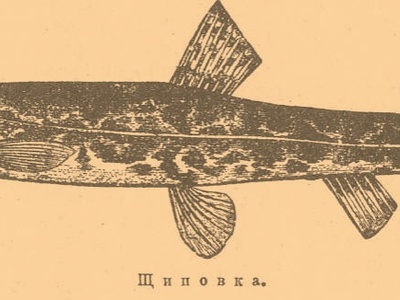
Spined Loach
A small, eel-like bottom dweller with a distinctive sharp spine below each eye, which it can erect for defense. It’s a protected species in Estonia due to its sensitivity to pollution and habitat loss.
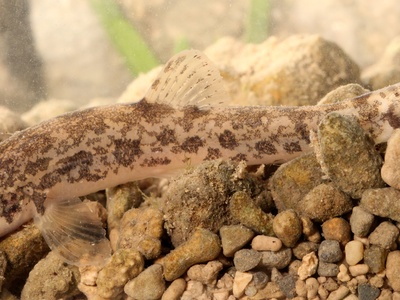
Stone Loach
A small, cylindrical bottom-dweller with three pairs of barbels around its mouth. It hides under stones during the day and forages for invertebrates at night. Prefers clean, well-oxygenated water.

Weatherfish
A long, eel-like fish known for its ability to survive in low-oxygen water by breathing air. It’s sensitive to changes in atmospheric pressure, becoming more active before storms. Strictly protected in Estonia.
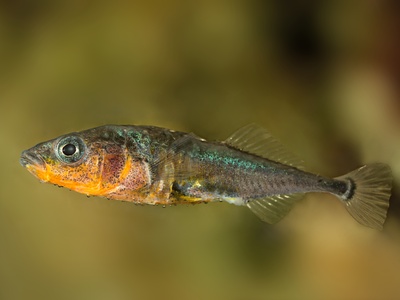
Three-spined Stickleback
A small, aggressive fish with 2-4 sharp spines on its back. Famous for the male’s complex nest-building behavior and bright red throat during breeding season. A very common and ecologically important species.
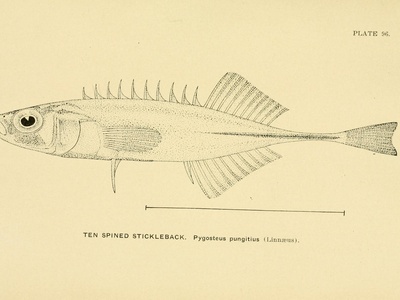
Nine-spined Stickleback
Smaller and more slender than its three-spined cousin, with 7-12 (usually 9) small spines on its back. It is more secretive and prefers heavily vegetated, calm waters. Also known as the ten-spined stickleback.
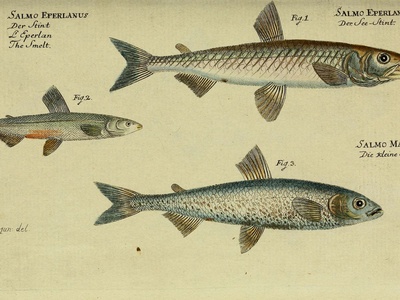
European Smelt
A slender, silvery fish known for its intense smell of fresh cucumbers. It forms large schools and undertakes spawning migrations into rivers in the spring. A popular fish for both commercial and recreational ice fishing.

Grayling
A beautiful fish of the salmon family, distinguished by its large, colorful dorsal fin. It’s very sensitive to pollution and requires cold, oxygen-rich water. A highly prized catch for fly fishers.
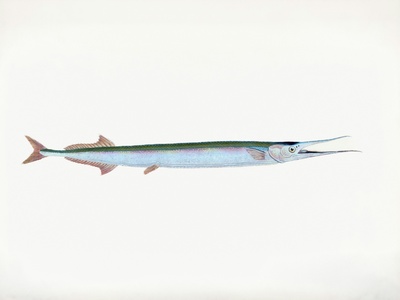
Garfish
A long, slender marine fish with a distinctive beak-like jaw full of needle-sharp teeth. Known for its green bones. It arrives in Estonian waters in late spring to spawn and is a fun, active catch for anglers.

Turbot
A large, circular flatfish prized for its firm, delicious meat. It has a scaleless, knobbly skin and excellent camouflage. A valuable commercial species, though not abundant in Estonian waters.

European Bullhead
A small, bottom-dwelling fish with a large head and tapering body. It has no swim bladder, so it moves in short darts along the riverbed. Its presence is a strong indicator of high water quality.
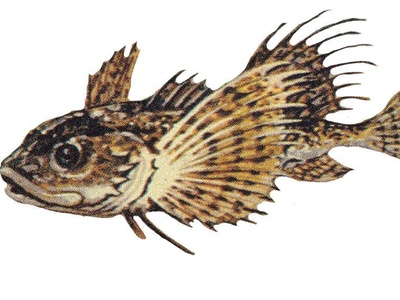
Fourhorn Sculpin
A unique cold-water fish, considered a relic from the Ice Age. It has four bony spines on its head, though these are reduced in freshwater populations. Lives on the bottom in deep, cold waters.
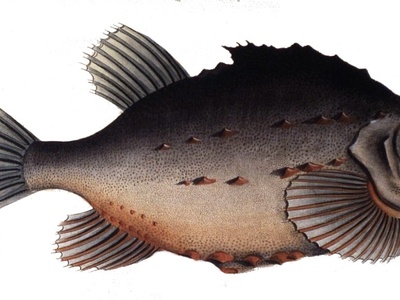
Lumpsucker
A round, stout-bodied marine fish with a suction cup on its belly to cling to rocks. The female’s roe is often used as a caviar substitute. They approach coastal areas to spawn in the spring.
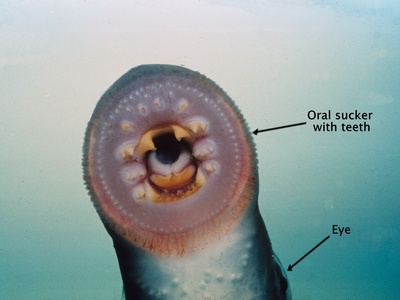
River Lamprey
A jawless, eel-like fish. The parasitic adult stage lives at sea, feeding on fish like herring and cod. They stop feeding and migrate up rivers in autumn to spawn the following spring. A traditional delicacy.

Sea Lamprey
The largest of the lampreys, a powerful parasite that can attack large fish like salmon. It is distinguished by its mottled coloration. A rare visitor to Estonian rivers compared to the river lamprey.
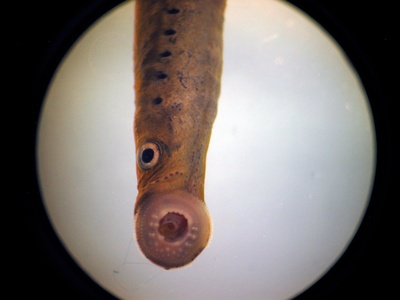
Brook Lamprey
A small, non-parasitic lamprey that spends its entire life in freshwater. The larvae live for years buried in silt, while the adults do not feed at all, living only to spawn and then die. An indicator of good water quality.

Round Goby
An invasive bottom-dwelling fish from the Black and Caspian Sea regions. It is highly aggressive and reproduces rapidly, outcompeting native species like the flounder and bullhead. Spreading quickly in Estonian waters.
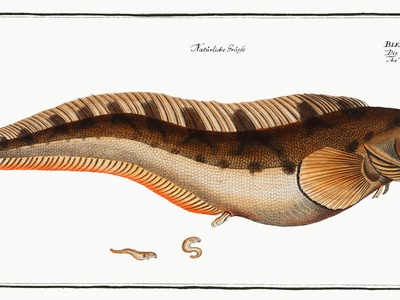
Viviparous Blenny
Also known as an eelpout, this fish is notable for giving birth to live, fully-formed young instead of laying eggs. It’s a common inhabitant of the coastal zone, often found under rocks or among seaweed.

Vendace
A small, silvery member of the salmon family that resembles a herring. It’s a plankton-feeder that forms dense schools. A commercially important and delicious fish, especially when smoked.

Peipsi Whitefish
A subspecies of the common whitefish, primarily found in Lake Peipsi. It’s a valuable commercial fish, distinguished from vendace by its larger size and different mouth shape. Highly prized for its taste.

Zarte
A silvery fish resembling a small bream, also known as the white bream. It has large eyes and reddish bases on its pectoral fins. Very common and often caught by anglers targeting other species.

Sabrefish
A unique-looking cyprinid with a straight back, a sharply curved belly resembling a knife blade, and a long, upward-curving pectoral fin. It primarily feeds on insects and small fish near the surface.
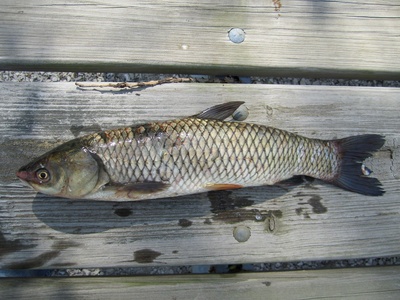
Grass Carp
A large herbivorous fish from Asia, introduced to control aquatic weeds. It is not known to reproduce naturally in Estonia’s climate but is stocked in some private water bodies. Can grow to a very large size.

Silver Carp
Another large Asian carp species introduced to some enclosed water bodies. A filter-feeder that consumes phytoplankton. Not established in the wild and very rarely seen. Famous for its habit of leaping out of the water.

Tuberose Goby
A small, invasive goby from the Ponto-Caspian region. It has distinctive tube-like nostrils and can be confused with the round goby, though it is much smaller. Its ecological impact is still being studied.
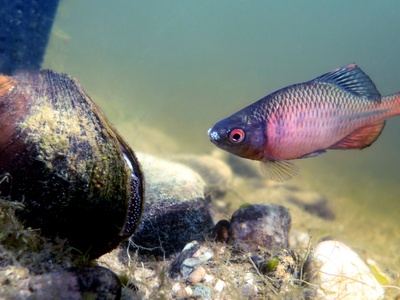
European Bitterling
A small, deep-bodied fish with a fascinating reproductive strategy. The female uses a long tube (ovipositor) to lay her eggs inside living freshwater mussels, where the young develop safely. A protected species.

Minnow
A small, slender fish that lives in schools in clear water. It’s an important part of the riverine food web. The males develop bright, colorful breeding markings in the spring. Used by anglers as live bait.
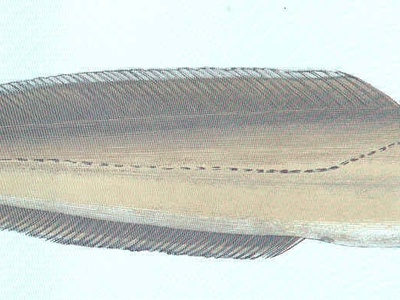
Four-bearded Rockling
A slender, eel-like fish with four barbels on its head—one on the chin and three on the snout. A bottom-dweller of the cod family, it’s a rare find in the less saline waters of Estonia.

Lumpsucker
A round, stout-bodied marine fish with a modified pelvic fin that forms a suction cup, allowing it to cling to rocks. The female’s roe is valuable. They migrate to shallower coastal waters to spawn.

Sandeel
A small, slender, eel-like fish that burrows into the sand to escape predators. It forms large schools and is a critical food source for seabirds, seals, and larger fish like cod and salmon.

Straight-nosed Pipefish
A very slender, green fish resembling a piece of seagrass. Like its seahorse relatives, the male carries the eggs in a brood pouch until they hatch. Its camouflage makes it very difficult to spot.

Deep-snouted Pipefish
A common pipefish in Estonian coastal waters. It has a longer, more pronounced snout than other pipefish species. The male becomes “pregnant,” carrying the eggs deposited by the female.

Black Goby
A common coastal goby, identifiable by its dark colour and a high, flag-like first dorsal fin. It lives on the seabed among rocks and vegetation. The male guards the eggs after the female lays them.
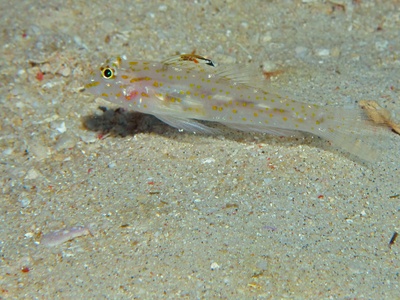
Sand Goby
One of the most abundant small fish in Estonian coastal waters. This tiny, sand-coloured goby is an important food source for larger fish and birds. It has a short lifespan, typically living for only one year.
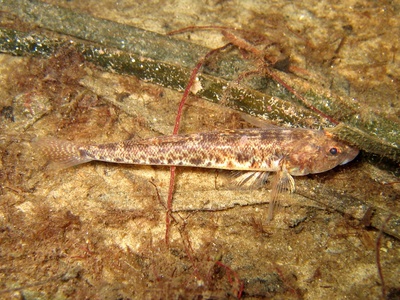
Common Goby
Similar to the sand goby but smaller and preferring even shallower, often less saline, estuarine environments. It can be extremely numerous in the right habitats, such as shallow, sheltered bays.
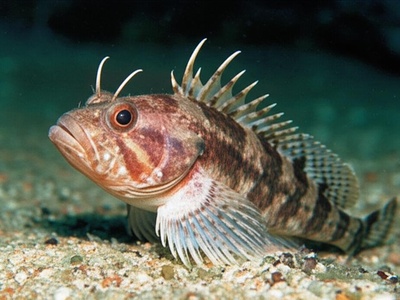
Atlantic Hook-head Sculpin
A small, bottom-dwelling sculpin with a large head and upward-curving spines on its gill covers. It is a cold-water species, very rarely found in Estonian waters, preferring deeper, more saline areas.

Shorthorn Sculpin
A robust, large-headed sculpin with sharp spines on its gill covers. It’s a voracious predator with excellent camouflage, often found among rocks and seaweed. Can produce a grunting sound when caught.

Long-spined Bullhead
A small sculpin with long spines on its gill covers and small fleshy tentacles on its snout. Well-camouflaged, it lives among rocks and seaweed in the intertidal zone. Its coloration can vary dramatically.

Dace
A streamlined, silvery cyprinid that prefers faster-flowing water than most of its relatives like roach or chub. It is a popular sport fish for river anglers, often caught on the fly or with small baits.

Belica
A very small, silvery cyprinid that looks like a miniature bleak. It is often introduced to new ponds accidentally with other fish. Hardy and able to tolerate poor conditions.
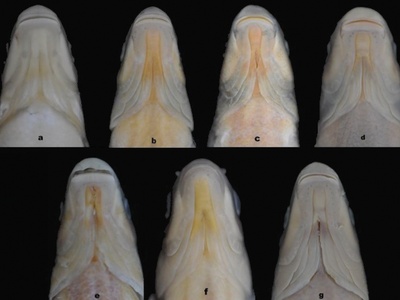
Nase
A distinct cyprinid with a prominent, fleshy snout (the “nose”) overhanging its hard, straight mouth, used for scraping algae off rocks. It undertakes long spawning migrations. Rare in Estonia, found only in the east.



